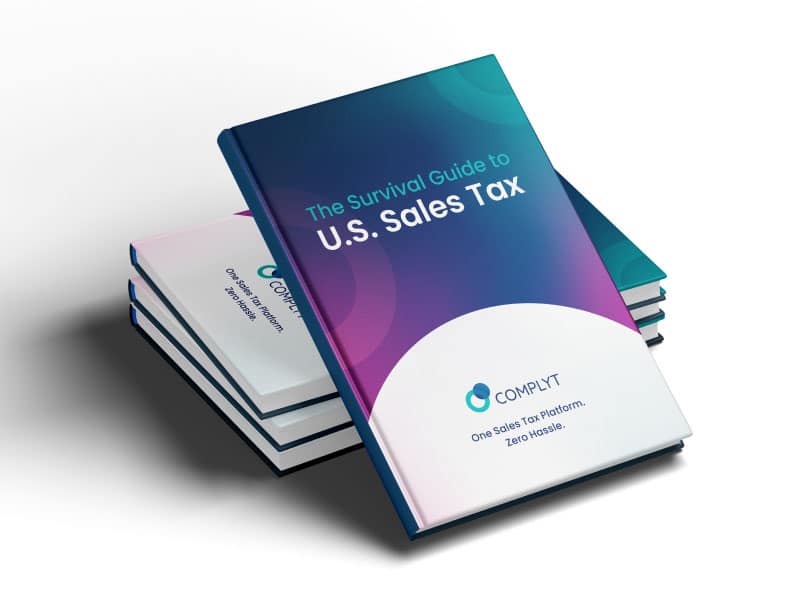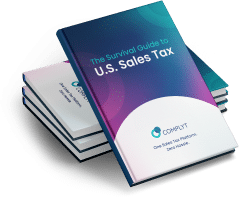What is the sales tax rate in California?
The sales tax rate in California is among the most complex in the US (and in an industry rife with complexities, that’s saying something). It is composed of a base statewide tax of 7.25%, plus any local district taxes. With this combination, the total sales tax can range anywhere from 7.25% to 10.5%, depending on the specific location of the sale. This variability necessitates careful attention for businesses operating or selling in multiple locations within the state.
Should your business collect Sales Tax in California?
Businesses should collect sales tax in California if they have a sales tax nexus in the state. This nexus could be a physical presence, such as a retail store or warehouse, or an economic nexus, which means it has reached a certain level of sales activity within the state. For example, if your business sells over $500,000 worth of goods or services to California customers, it would be considered to have an economic nexus.
California Physical Sales Tax Nexus
A physical sales tax nexus in California arises when your business has a tangible presence in the state. This could include a brick-and-mortar store, a warehouse, or an employee residing and working in California.
Sales Tax Physical Nexus checklist for California
Some instances where a physical nexus can be established in California include:
- Maintaining a permanent or temporary business location in the state.
- Employing or contracting personnel in the state, such as remote employees.
- Holding goods in a warehouse in the state.
- Owning real or personal property in the state.
- Attending a trade show for more than 15 days with sales exceeding $100 000.
California Economic Nexus Threshold: Revenue, Thresholds and Transactions
California established its economic nexus law following the 2018 Supreme Court ruling in South Dakota v. Wayfair. The law states that a business has an economic nexus in California if it has sales exceeding $500,000, regardless of the number of transactions. This means even online-only retailers with substantial California sales must collect and remit California sales tax.
Unraveling services taxable in California
In California, most services are not subject to sales tax. However, services that lead to the manufacturing or creation of tangible physical objects are generally deemed taxable. Some exceptions include fabrication services and certain technology transfer agreements.
Here’s a list of some taxable services:
- Fabrication labor, when the item being fabricated will be resold.
- Certain appliance installation and repair services.
- Certain technology transfer agreements.
So if your service is inseparable from the sale of a physical object, you need to start taking sales tax compliance in California seriously.
California Sales Tax on Products: How to Calculate What Your Business Should be Charging
Calculating the sales tax you should be charging can be complex due to California’s combined state and local sales tax rates. First, find the state’s base rate of 7.25%. Then, add any local district taxes that apply to the specific location of the sale. For example, if you’re selling a product in a location with a 1.25% local district tax, you would charge your customer a total sales tax rate of 8.5%.
It’s imperative that businesses stay up to date with these localized sales tax rates to avoid accidental exposure, as these tax rates change periodically as tax laws evolve. In 2023 alone, the local rate of Westminster, OC, changed in January and reverted back to the original in April.
What is the California sales tax rate on clothing?
California clothing tax falls under the same ambit as the sale of most other tangible personal property, and is currently subject to the sales tax base rate of 7.25% plus any additional local sales tax rates. But there is one exceptionally valuable exception to this rule.
Non-profit organizations and thrift stores are not required to collect sales tax on purchases as they provide vital products to disadvantaged communities. According to the California Department of Tax and Fee Administration (CDTFA), the sale of used clothing, household items, or other retail items sold by thrift stores that operated by a qualifying nonprofit organization are exempt from tax until January 1, 2029 as long as the organization obtains revenue for the funding of medical and social services.
The California Online Sales Tax Question: Are SaaS and Digital Services Taxable?
California online sales is mostly simple. But as with any sales tax consideration, there are nuances you need to be aware of.
taxIn California, SaaS and other digital services are generally not considered tangible personal property and thus are not typically subject to sales tax. But if a physical product is created anywhere in the transaction process, the digital service and purchase does become taxable.
However, if a digital product is considered equivalent to a physical product, it might be taxable. For example, an e-book downloaded onto a device might be seen as equivalent to a physical book in certain local jurisdictions and thus taxable.
Does my Business Need to Charge Sales Tax for SaaS in California?
Generally, businesses do not need to charge sales tax for SaaS in California. However, the subject of California SaaS sales tax is apt to change and exceptions may apply, so it’s important to keep up with the latest laws and regulations.
How can a business get a sales tax permit in California?
To get a sales tax permit in California, businesses can apply online through the California Department of Tax and Fee Administration’s website. There’s no fee to obtain the permit, but you may be required to post a security deposit. Ultimately, this step is simple, easy, and painless – a welcome change of pace in the sales tax world.
Collecting Sales Tax in California as a Business
This is where the fun begins. Once you’ve established a nexus and obtained your sales tax permit, it’s time to start collecting sales tax. This includes setting up your point-of-sale system to calculate the correct tax rate based on the specific location of the sale. Remember, California’s tax rate varies by location, so it’s crucial to get it right.
California Tax Return Due Dates Explained
The due dates for filing sales tax returns in California depend on the filing frequency assigned to you by the CDTFA, which could be monthly, quarterly, or annually. The return is typically due by the last day of the month following the reporting period.
What is the required frequency for sales tax returns in California?
The required frequency for filing sales tax returns in California is determined by the CDTFA and depends on your sales volume. High-volume sellers may need to file monthly, while lower-volume sellers may only need to file quarterly or annually, making your compliance requirements something that evolves along with your business.

